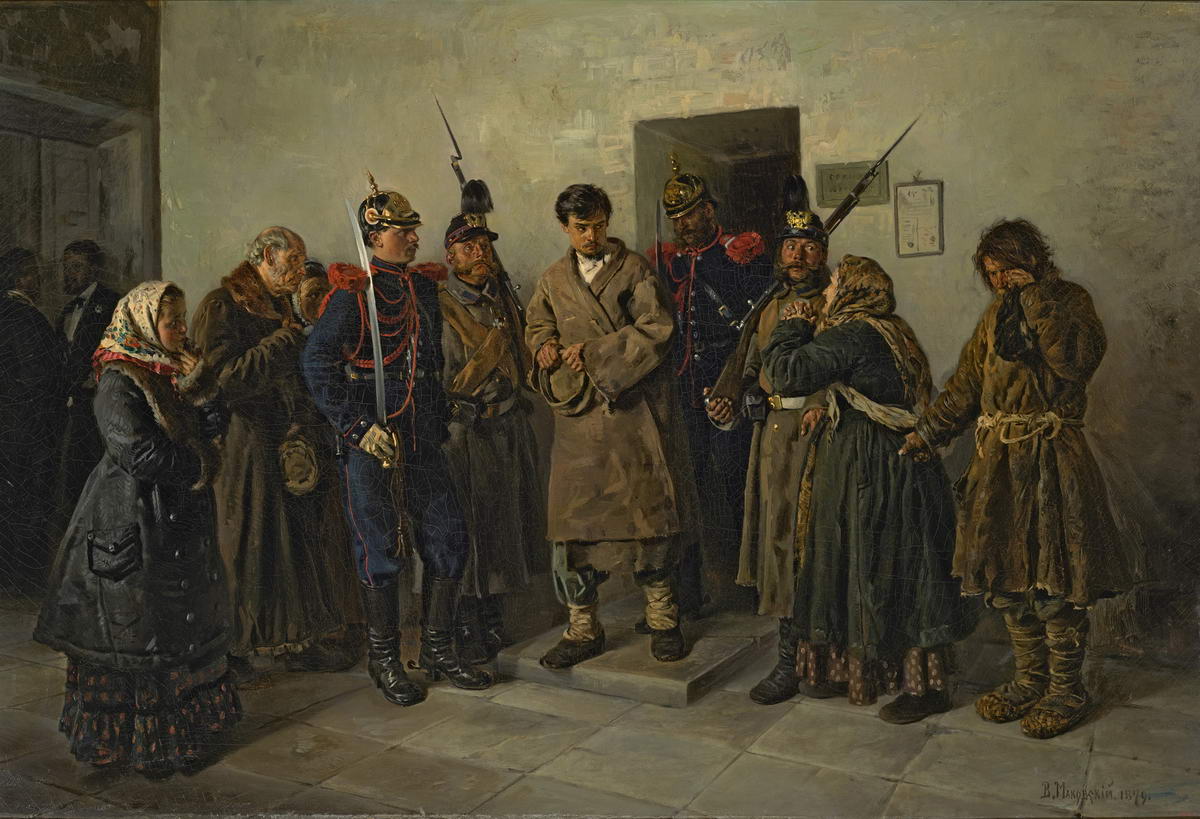


Обилие тем, затронутых в творчестве Маковского, позволило говорить современникам о художнике как об авторе, создавшем в живописи энциклопедию русской действительности. В 1879 Маковский создал картину "Осужденный", где с явным сочувствием изобразил молодого народовольца, выходившего из зала суда в сопровождении жандармов. Горе его бедных стариков родителей лишь подчеркивало драматизм произведения, которое, по словам В. В. Стасова, "глубоко и сильно копнуло современную жизнь".
Живописец, рисовальщик, педагог; автор картин бытового жанра, портретист.
Учился в Московском училище живописи и ваяния (1858-1866) у С. К. Зарянко и Е. С. Сорокина. Академик живописи (1873), профессор (1892). Действительный член Императорской Академии художеств (1893). Участник выставок с 1862: в Академии художеств (1864-1873), Товариществе передвижных художественных выставок (1872-1918, член с 1872), периодически в Московском обществе любителей художеств (1881-1899, 1901, 1906, 1909), Товариществе южнорусских художников (1893, 1897-1900); всероссийских в Москве (1882) и Нижнем Новгороде (1896); русского искусства в Лондоне (1910); международных в Антверпене (1884 - Гран-при), Мюнхене (1909 – золотая медаль). Преподавал в Московском училище живописи, ваяния и зодчества (1882-1894), в Высшем художественном училище при Академии художеств (1894-1918, в 1894-1896 – ректор).

This picture is typical of the oeuvre of Vladimir Makovsky in the 1870s. Besides painting genre scenes reflecting the lives of the common people, the artist also addressed political and social problems. In the mid-1870s, there was a national movement in Russia known as narodnichestvo or “going to the people”. In the spring of 1874, members of the urban intelligentsia left the cities for the villages, going among the people to teach the peasantry their moral imperative to revolt. They found almost no popular support, however, and the movement was an unmitigated failure.
Like llya Repin, Vladimir Makovsky often addressed the image of Russian revolutionaries in the 1870s. Scenes of arrests, imprisonment and exile provided rich material for creative concepts and psychological dramas. In this particular work, the artist attempts to convey both the convict’s sufferings and his unbroken spirit, employing the traditional devices of genre painting to portray a positive hero.
Painter, draughtsman, teacher, genre painter, portraitist, animalist. Studied at the Moscow School of Painting and Sculpture (1861-1866). Academician of painting (1873), professor (1892), full member of the Imperial Academy of Arts (1893). Contributed to exhibitions (from 1862). Taught at the Moscow School of Painting, Sculpture and Architecture (1882-1894) and the Imperial Academy of Arts (1894-1918, chancellor 1894-1896).



